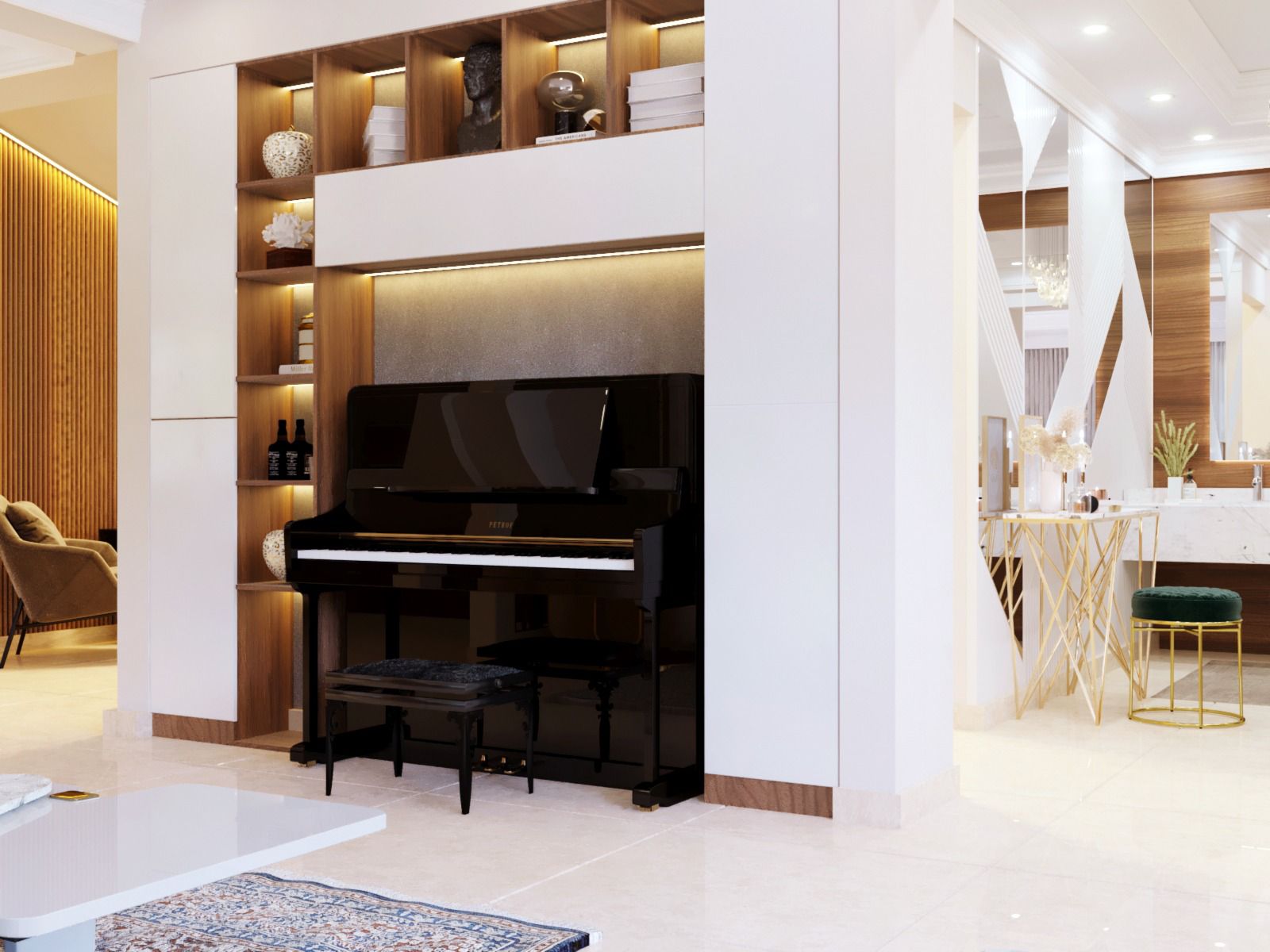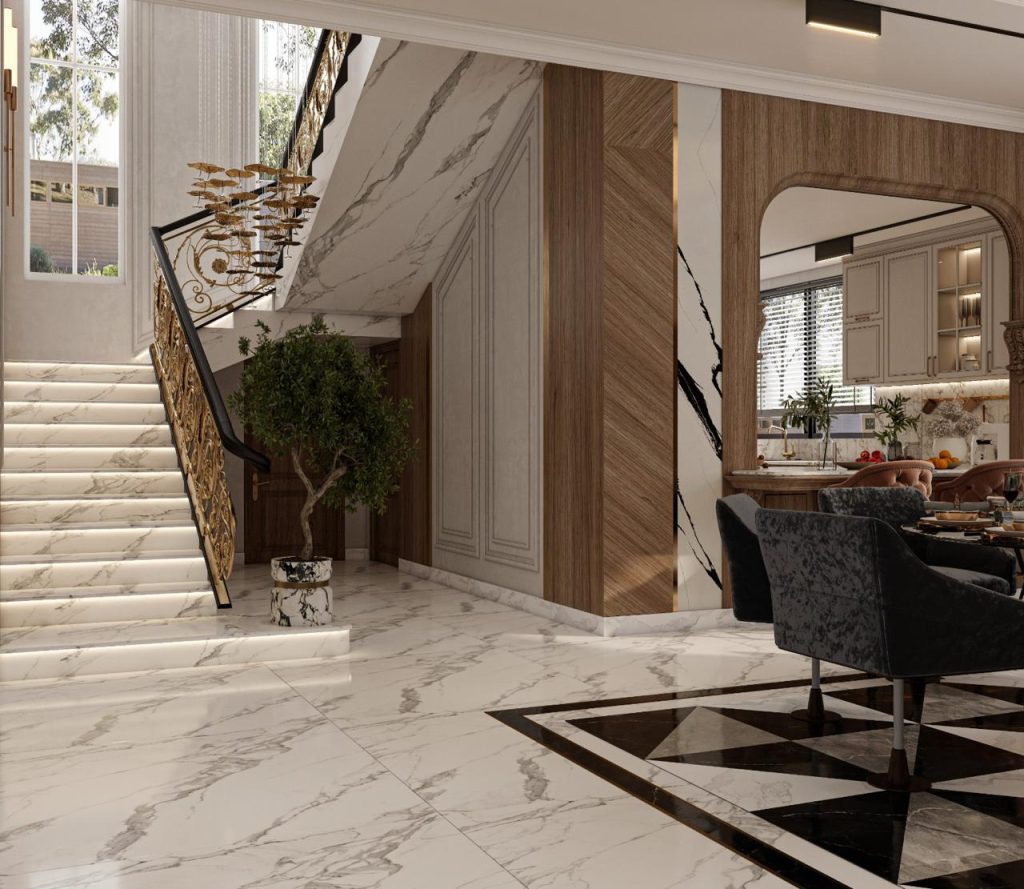Understanding Luxury Interiors
Luxury interiors go beyond mere opulence; they embody a blend of elegance, functionality, and personalized style. In Riyadh, where modernity meets tradition, luxury interior design reflects both the city’s cosmopolitan vibe and its rich cultural heritage. Creating a luxurious space involves thoughtful planning, high-quality materials, and attention to detail, ensuring that every element contributes to a harmonious and sophisticated environment.
What Defines Luxury Interiors?
Luxury interiors are characterized by their use of premium materials, bespoke furniture, intricate detailing, and a cohesive design theme. They often incorporate a mix of textures, rich color palettes, and statement pieces that serve as focal points. The emphasis is on creating a comfortable yet aesthetically pleasing space that exudes sophistication and timelessness.
Current Trends in Luxury Interiors in Riyadh
1. Fusion of Modern and Traditional Elements
In Riyadh, luxury interiors often blend contemporary design with traditional Saudi elements. This fusion creates a unique aesthetic that honors cultural heritage while embracing modernity. Think of sleek, modern furniture paired with intricate Arabian patterns, luxurious fabrics, and handcrafted decor pieces.
Examples of Fusion Design
- Furniture: Modern sofas and chairs with traditional wooden carvings.
- Lighting: Contemporary chandeliers featuring traditional motifs.
- Textiles: Luxurious drapes with classic Arabic designs.
2. Sustainable Luxury
Sustainability is becoming increasingly important in luxury interior design. Clients in Riyadh are seeking eco-friendly materials and sustainable practices that do not compromise on quality or aesthetics. This trend emphasizes the use of renewable resources, energy-efficient lighting, and environmentally responsible manufacturing processes.
Sustainable Design Elements
- Natural Materials: Use of bamboo, reclaimed wood, and recycled metals.
- Energy-Efficient Lighting: LED fixtures and smart lighting systems.
- Greenery: Incorporation of indoor plants and living walls to enhance air quality and add natural beauty.
3. Minimalist Luxury
Minimalism remains a significant trend in luxury interiors, focusing on simplicity, clean lines, and uncluttered spaces. This approach emphasizes quality over quantity, with each piece of furniture and decor serving a functional purpose while contributing to the overall aesthetic.
Characteristics of Minimalist Luxury
- Neutral Color Palette: Shades of white, beige, and gray create a serene backdrop.
- Quality Over Quantity: Investing in fewer, high-quality pieces.
- Functional Design: Furniture that is both beautiful and practical.
4. Technology Integration
Smart home technology is a staple in luxury interiors, enhancing convenience and modern living. From automated lighting and climate control to integrated sound systems and security features, technology seamlessly blends into the design without being intrusive.
Technological Enhancements
- Smart Lighting Systems: Automated controls and adjustable brightness.
- Climate Control: Smart thermostats for optimal comfort.
- Entertainment: Integrated audio and visual systems for a premium experience.
5. Personalized Spaces
Luxury interiors are highly personalized, reflecting the unique tastes and lifestyles of the homeowners. Custom furniture, bespoke decor, and individualized color schemes ensure that each space is one-of-a-kind and tailored to the client’s preferences.
Ways to Personalize Luxury Interiors
- Custom Furniture: Tailored pieces that fit perfectly within the space.
- Personal Art Collections: Showcasing unique artwork that holds personal significance.
- Customized Layouts: Designing spaces that accommodate specific lifestyle needs.
Inspirations for Creating Luxury Interiors in Riyadh
Embracing Cultural Heritage
Incorporating elements of Saudi culture can add depth and meaning to luxury interiors. Traditional art, Arabic calligraphy, and regional textiles can be integrated into modern designs to create a rich, culturally infused aesthetic.
Cultural Design Elements
- Art Pieces: Displaying traditional Saudi art and crafts.
- Calligraphy: Using Arabic script as a decorative motif.
- Textiles: Incorporating regional patterns and fabrics in upholstery and drapes.
Using High-Quality Materials
Luxury interiors rely on the use of superior materials that offer durability and aesthetic appeal. Marble, high-end woods, fine metals, and plush fabrics are commonly used to elevate the design.
Premium Materials in Luxury Design
- Marble: Used for flooring, countertops, and decorative accents.
- Hardwoods: Exquisite finishes and rich tones in furniture and flooring.
- Metals: Brass, gold, and stainless steel accents for a touch of glamour.
- Fabrics: Silk, velvet, and high-thread-count linens for a luxurious feel.
Incorporating Statement Pieces
Statement pieces serve as focal points in luxury interiors, adding character and visual interest. Whether it’s an oversized chandelier, a unique piece of art, or a custom-made furniture item, these elements define the space and draw attention.
Examples of Statement Pieces
- Chandeliers: Grand, ornate lighting fixtures that serve as centerpieces.
- Artwork: Large-scale paintings or sculptures that capture the eye.
- Furniture: Unique chairs, tables, or sofas that stand out in the space.
Maximizing Natural Light
Natural light enhances the beauty of luxury interiors, making spaces feel more open and inviting. Large windows, glass doors, and skylights are strategically placed to maximize light intake and highlight architectural features.
Strategies to Enhance Natural Light
- Window Treatments: Using sheer curtains to allow light while maintaining privacy.
- Mirrors: Placing mirrors to reflect light and create a sense of space.
- Glass Elements: Incorporating glass walls or partitions to enhance light flow.

Luxury Interiors Riyadh
Practical Tips for Achieving Luxury Interiors
1. Focus on Detail
Attention to detail is crucial in luxury interior design. Small touches, such as decorative trims, bespoke hardware, and intricately designed textiles, contribute to the overall elegance and sophistication of the space.
2. Balance Functionality and Aesthetics
While luxury interiors are visually stunning, they must also be functional. Ensure that the design serves its intended purpose without sacrificing comfort or practicality.
3. Invest in Quality
Investing in high-quality materials and craftsmanship ensures that the interiors are not only beautiful but also long-lasting. Quality pieces withstand the test of time and maintain their appeal over the years.
4. Create a Cohesive Design
A cohesive design ensures that all elements of the space work together harmoniously. Consistent color schemes, complementary textures, and a unified theme create a seamless and elegant environment.
5. Personalize Your Space
Personalization adds a unique touch to luxury interiors. Incorporate elements that reflect your personality, interests, and lifestyle to make the space truly yours.
Luxury Interiors Riyadh
Luxury interiors in Riyadh embody a perfect blend of elegance, functionality, and personalized style. By embracing cultural heritage, using high-quality materials, incorporating statement pieces, and maximizing natural light, you can create a space that is both sophisticated and inviting. Whether you’re designing a home or an office, the principles of luxury interior design ensure that your space is optimized for beauty and practicality, offering a timeless and elegant environment that reflects your unique taste and lifestyle.
Learn More About Luxury Interiors:
To delve deeper into the world of luxury interior design and explore how to create an exquisite space tailored to your needs, consider consulting with a professional interior designer who can provide personalized insights and expert guidance.
















